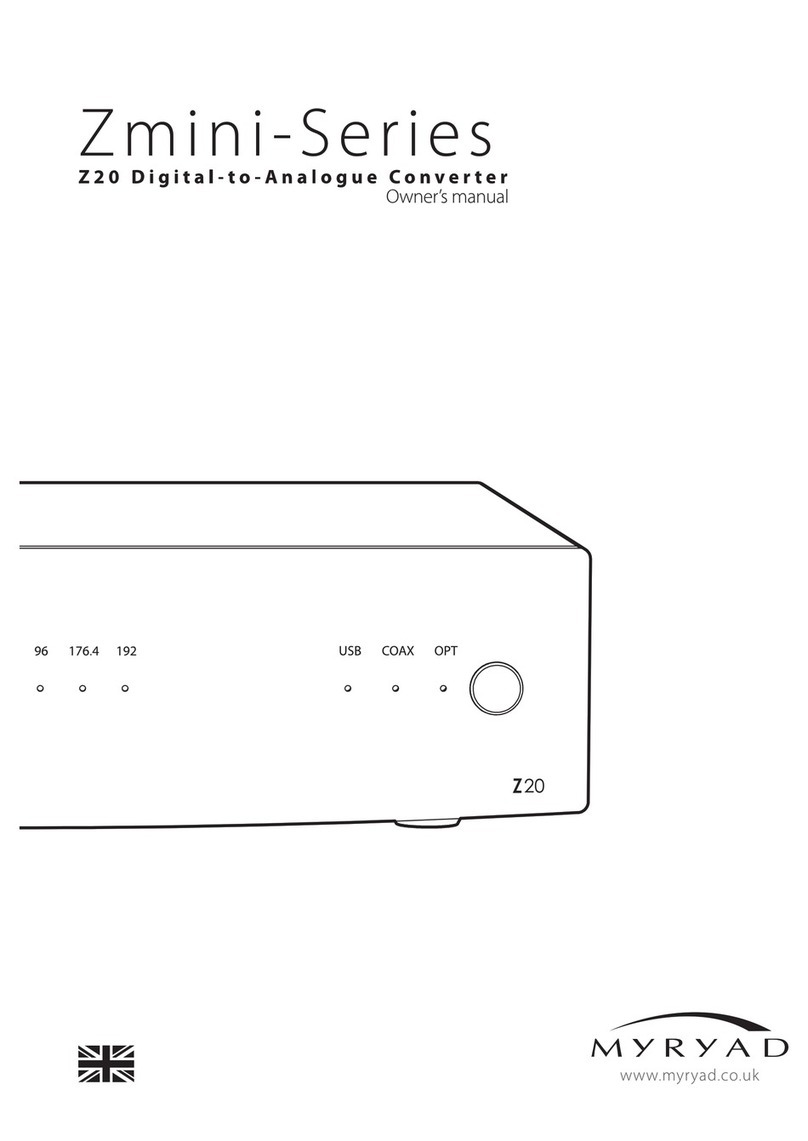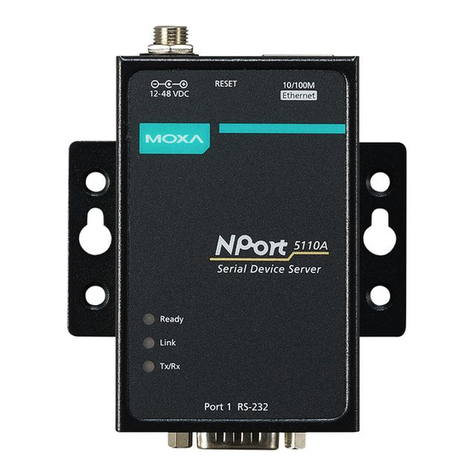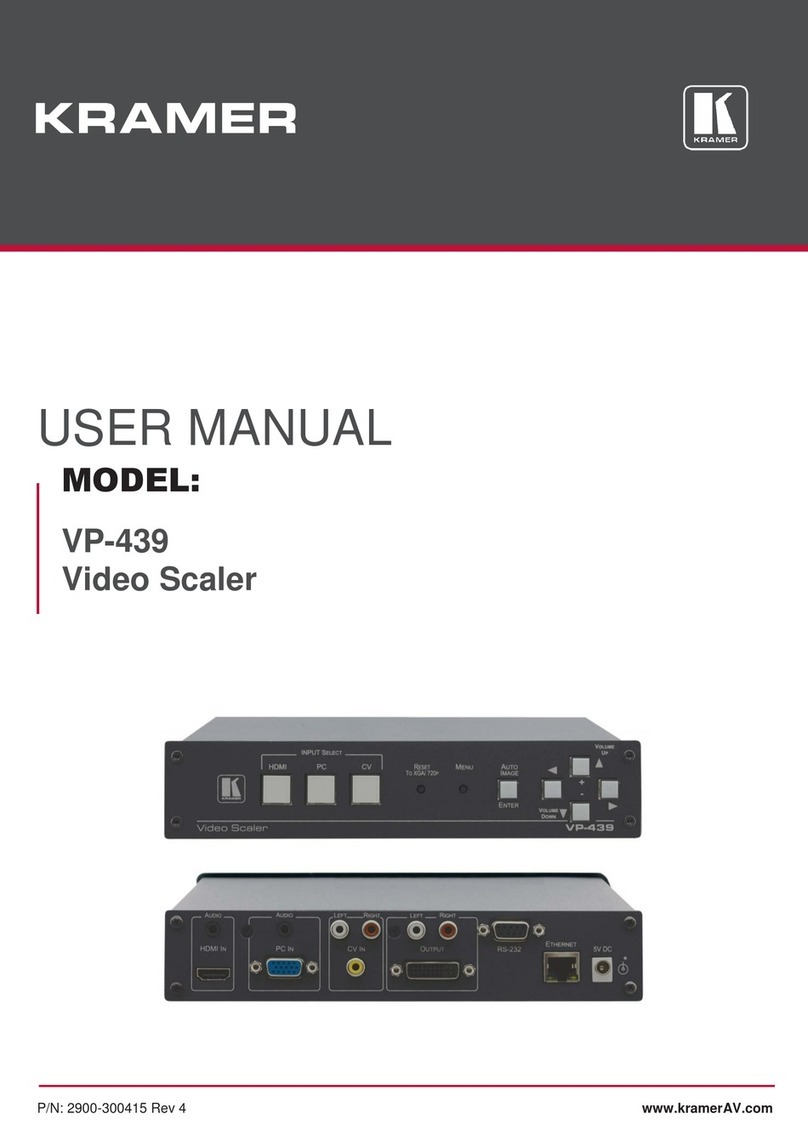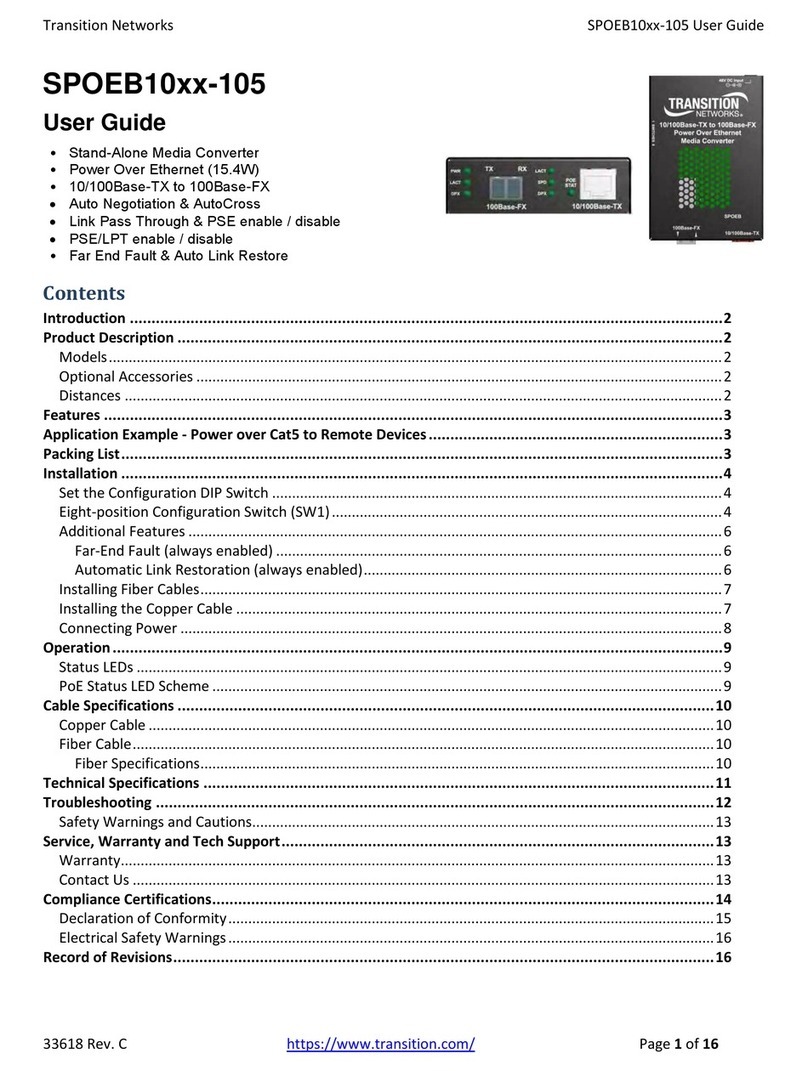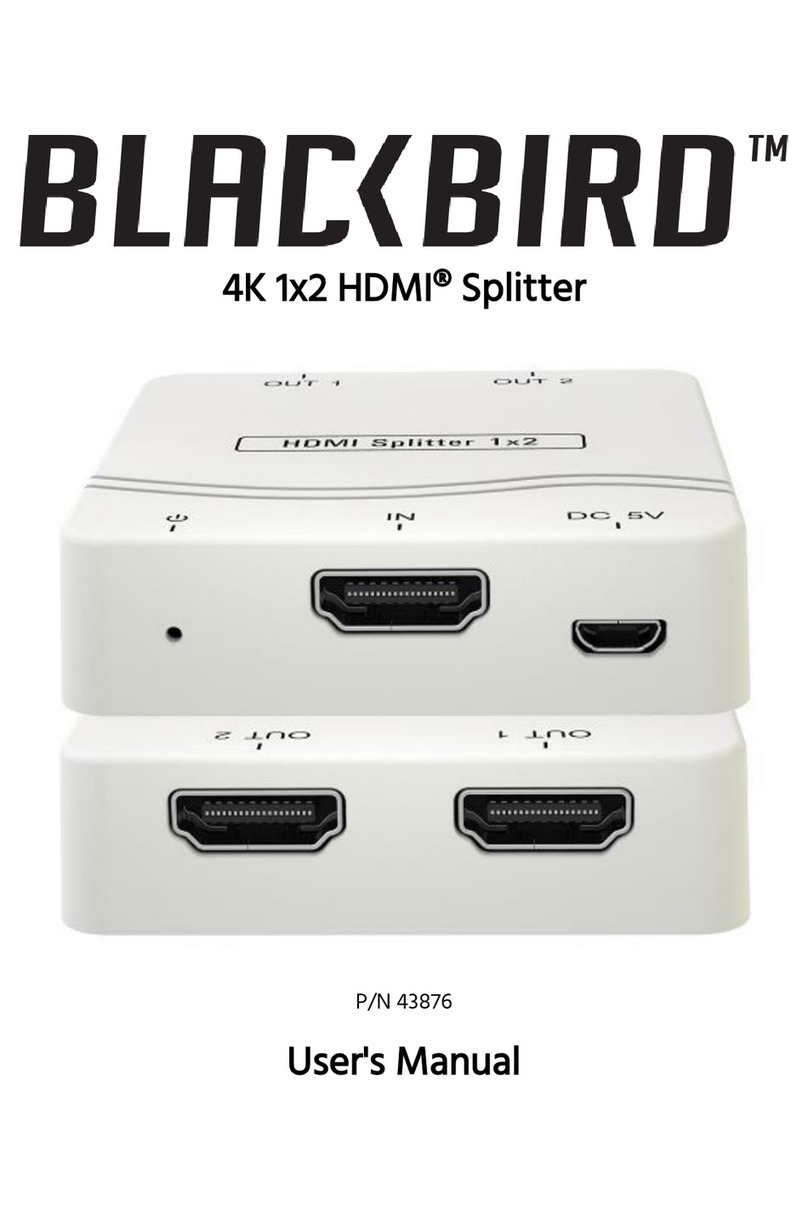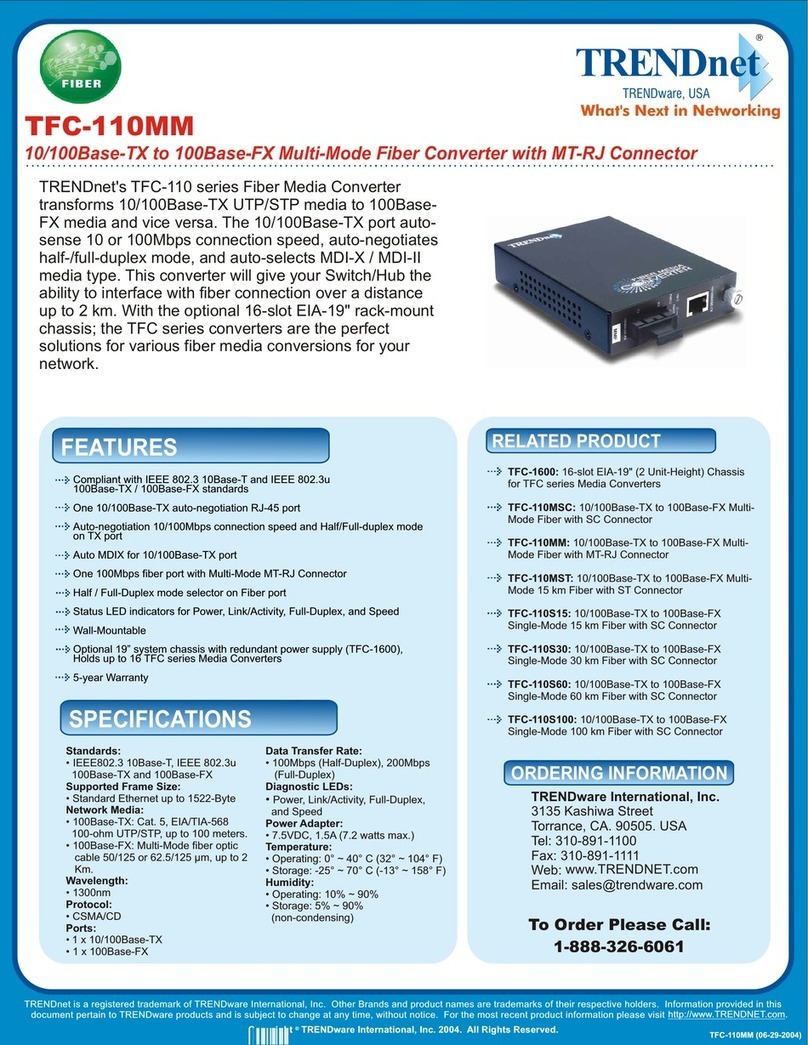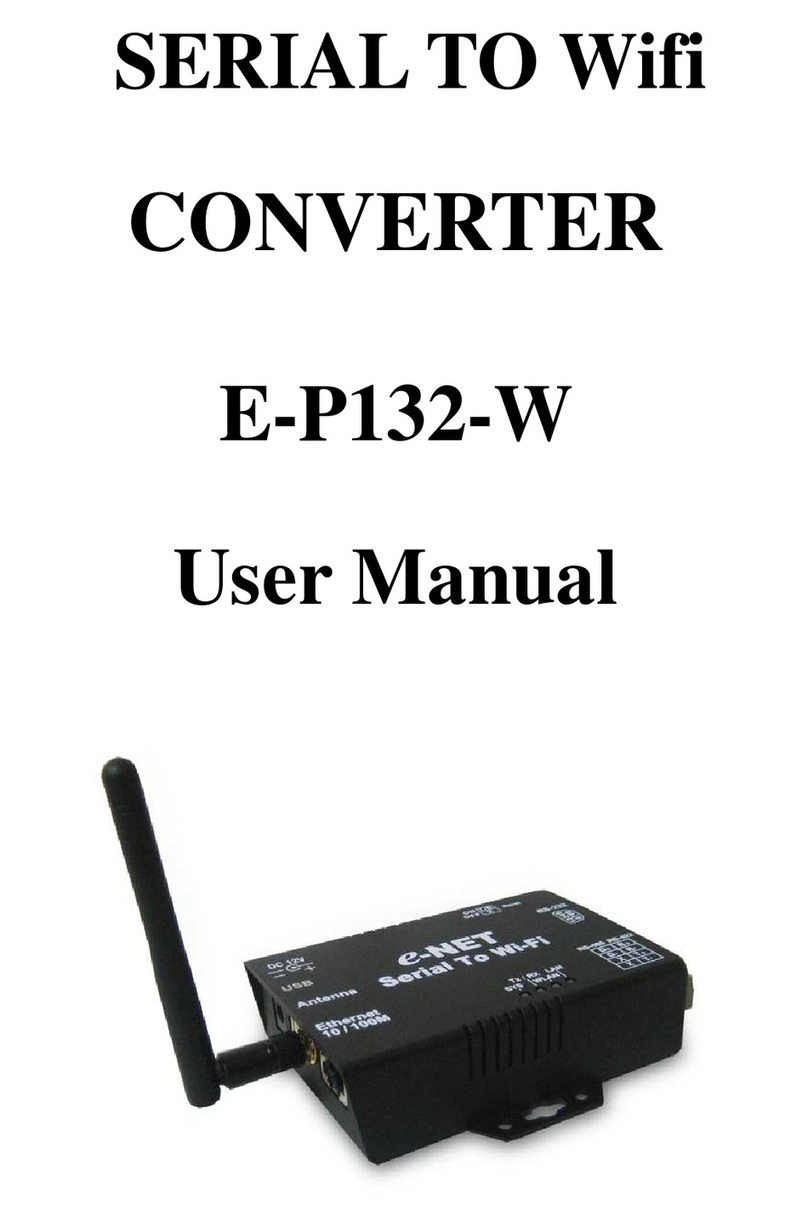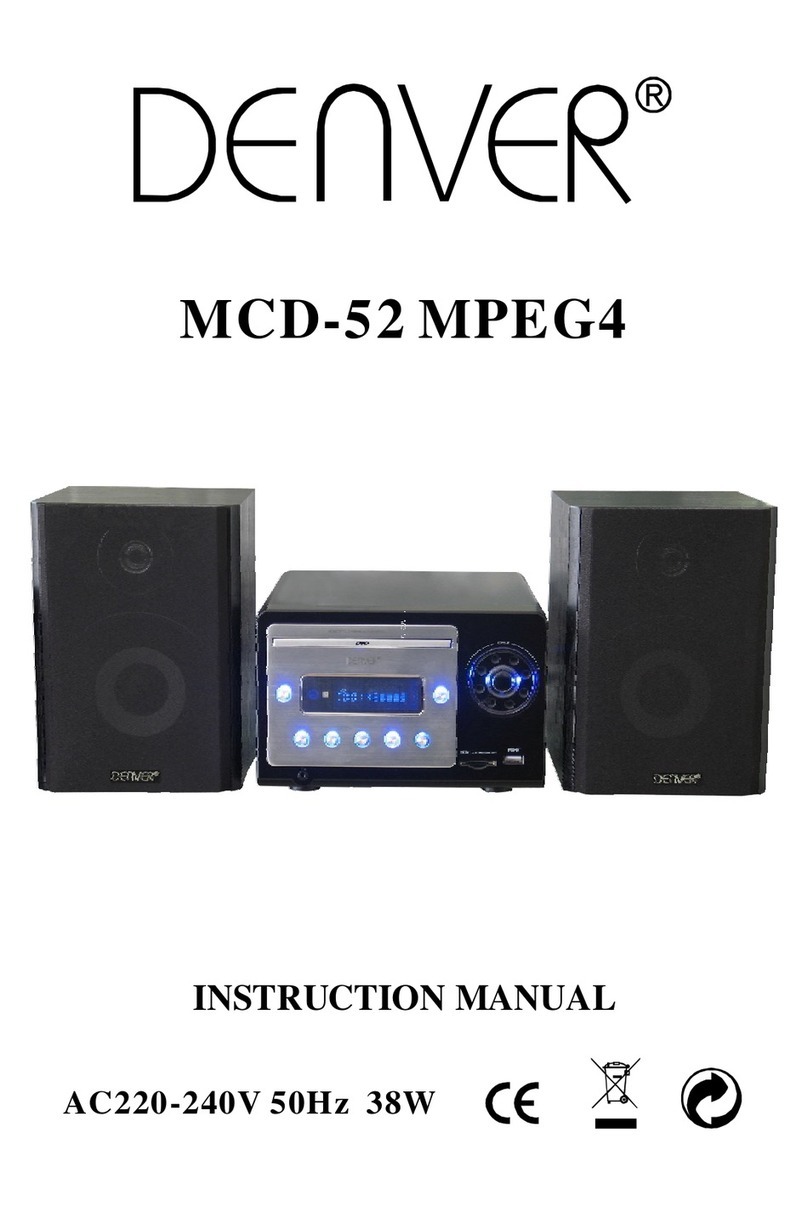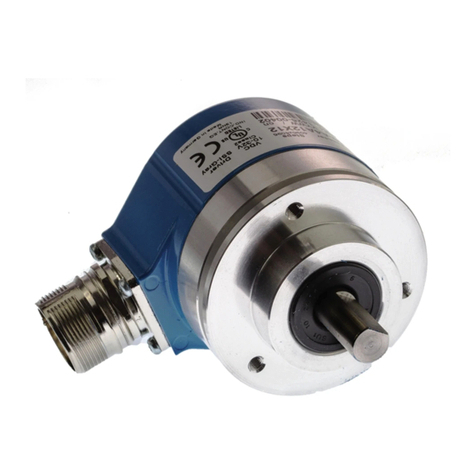EnvironmentalLights.com DMX-5-8A User manual

11235 West Bernardo Court, Suite 102
San Diego, CA 92127
888-880-1880
Fax: 707-281-0567
EnvironmentalLights.com
Copyright EnvironmentalLights.com All Rights Reserved 10/1/18
StudioPro 5 Channel DMX Digital Decoder
- 8A per Channel
Part number: DMX-5-8A
The StudioPro 5 Channel DMX Digital Decoder - 8A per Channel is a five channel DMX
controller with RDM compatibility and a wide array of configuration options. It accepts 12-24V
DC input voltage range at eight amps per channel maximum current and can support a wide
variety of LED installations. The digital display allows for easy configuration of the DMX
address, number of output channels, PWM frequency, bit-rate and dimming curve. DMX
connection options include 5-pin XLR, RJ45 and terminal blocks for input and output.
Features
•Digital readout legibly displays the DMX address, which is useful in dimly lit rooms.
•Easily change DMX address without DIP switch math.
•PWM frequency is adjustable from 500Hz to 30kHz for flicker-free performance in any
application.
•Switchable output smoothing, 8-bit or 16-bit.
•Adjustable number of output channels. See page 3.
•Configurable DMX modes, including 8/16-bit inputs and master controls. See pages 4-5.
•12-24V DC input range.
•High 5 x 8A current capacity means it can drive up to 480W/960W per receiver at
12V/24V respectively.
•Adjustable dimming curve for a best fit for your application.
•Uses 5-pin XLR, RJ45 and terminal block connectors for DMX communication.
•Mounting tabs are integrated into the rugged chassis.

Copyright EnvironmentalLights.com All Rights Reserved 10/1/18
2
Applications
•High capacity DMX lighting applications requiring 1, 2, 3, 4 or 5 output channels.
•On-camera applications requiring high PWM frequency.
Specifications
Dimensions: 2.9” x 6.5” x 1.5”
74 mm x 164 mm x 39mm
Output Channels: 1-5
Input voltage: 12-24 Volts DC
Max. current load: 5x8A
Max. output power: 480W/960W (12V/24V)
PWM frequency: 500-30,000Hz
Wiring
1. Confirm that the power supply voltage matches the LED voltage and that the power
supply is unplugged.
2. Connect the LEDs and power supply to the DMX-5-8A using the screw terminals. Power
supply positive and ground should be connected to “V+” and “GND” terminals
respectively. LED positive should be connected to the “+” terminal. The V+ terminals
may also be used for LED positive if extra space is needed. Connect LED negatives to
output channels 1-5 as appropriate for the installation.
3. Power up the power supply. The screen will display where “XXX” is the
DMX starting address.
4. Connect the DMX input and output (if applicable) to any of the input/output ports. Note:
do not send DMX signals to the decoder while it is powered down.

Copyright EnvironmentalLights.com All Rights Reserved 10/1/18
3
Operation
Navigation Buttons:
•Up and Down are used to cycle through settings and adjust parameters.
•Enter is used to select a setting to adjust.
•Back saves the current setting and stops adjustment of that parameter
DMX Address:
This display indicates the current DMX starting address. Press Enter and then Up or Down to
change the DMX starting address. Up and Down can be held down to quickly scroll through
addresses. Press Back once the desired DMX address has been reached.
Output Channels:
The “Output Channels” parameter allows the utilize all five output channels using fewer DMX
channels. Based on the number of independent channels needed, the outputs will be mapped as
follows. Note: this mapping is for DMX starting address 001 and default “Decoding Mode”
value. See the section on Decoding Mode below for more information.
Output
Channel
CHXX Setting
CH05
CH04
CH03
CH02
CH01
Channel 1
001
001
001
001
001
Channel 2
002
002
002
002
001
Channel 3
003
003
003
001
001
Channel 4
004
004
003
002
001
Channel 5
005
004
003
002
001
Output PWM Resolution:
The Bit Depth setting controls the DMX output smoothing resolution, either 8-bit or 16-bit. The
decoder provides output smoothing in 16-bit mode (default and recommended). This setting is
different from 16-bit DMX input. 16-bit DMX input is set through the Decoding Mode.

Copyright EnvironmentalLights.com All Rights Reserved 10/1/18
4
PWM Frequency:
The output PWM frequency is set through this parameter, with “XX” being the frequency in
kHz. The default value is “01”, corresponding to 1kHz. Options range from “00” = 500Hz to
“30” = 30kHz.
The output PWM frequency can be adjusted to avoid flicker in different settings. It can be left at
1kHz for most applications. For on-camera use, settings around 5kHz are typically sufficient to
eliminate flicker. Very high frequency settings (over 10kHz) should be used only if necessary.
Very high frequency signals can be distorted by long cable runs and/or environments will a lot of
electrical signals.
Output Dimming Curve:
The “gamma” value of the dimming curve is set with this parameter. This changes the rate at
which the brightness changes at different DMX values. It can be used to make dimming less
sensitive at the high or low end for greater precision in that brightness range. Default value is 1.5
and can be adjusted from 0.1-9.9. Values less than 1 give greater dimming precision at high
brightness and values greater than 1 increase precision at low brightness. Human vision is more
sensitive at low light levels, so values greater than 1 are most common.

Copyright EnvironmentalLights.com All Rights Reserved 10/1/18
5
DMX Decoding Mode:
The DMX Decoding Mode determines how the DMX input is processed and mapped to the
outputs. This setting is directly affected by the Output Channels parameter, please make sure that
setting is configured before adjusting the DMX Decoding Mode. The setting “dP2.1” enables 16-
bit input mode for all channel configurations. This mode uses two DMX input channels for each
output, the first channel is the standard DMX adjustment and the second is for fine dimming
control.
The tables below are based on a DMX starting address of 001. The CHXX setting is indicated
above each table
CH03
dP1.1 dP2.1 dP4.3 dP5.3
001
Dimming output
1
Dimming output
1
Dimming output
1
Dimming output
1
002
Dimming output
2
Micro-dimming
output 1
Dimming output
2
Dimming output
2
003
Dimming output
3, 4 & 5
Dimming output
2
Dimming output
3, 4 & 5
Dimming output
3, 4 & 5
004
Micro-dimming
output 2
Master dimming Master dimming
005
Dimming output
3, 4 & 5
Strobe
006
Micro-dimming
output 3, 4 & 5
Decoding Mode
DMX
Channel
CH02
dP1.1 dP2.1 dP3.2
001
Dimming output
1 & 3
Dimming output
1 & 3
Dimming output
1 & 3
002
Dimming output
2 & 4
Micro-dimming
output 1 & 3
Dimming output
2 & 4
003
Dimming output
2 & 4
Master dimming
004
Micro-dimming
output 2 & 4
Decoding Mode
DMX
Channel
CH01
dP1.1 dP2.1
001
Dimming all
channels
Dimming all
channels
002
micro-dimming
all channels
DMX
Channel
Decoding Mode

Copyright EnvironmentalLights.com All Rights Reserved 10/1/18
6
CH04
dP1.1 dP2.1 dP5.4 dP6.4
001
Dimming output
1
Dimming output
1
Dimming output
1
Dimming output
1
002
Dimming output
2
Micro-dimming
output 1
Dimming output
2
Dimming output
2
003
Dimming output
3
Dimming output
2
Dimming output
3
Dimming output
3
004
Dimming output
4 & 5
Micro-dimming
output 2
Dimming output
4 & 5
Dimming output
4 & 5
005
Dimming output
3
Master dimming Master dimming
006
Micro-dimming
output 3
Strobe
007
Dimming output
4 & 5
008
Micro-dimming
output 4 & 5
Decoding Mode
DMX
Channel
CH05
dP1.1 dP2.1 dP6.5 dP7.5
001
Dimming output
1
Dimming output
1
Dimming output
1
Dimming output
1
002
Dimming output
2
Micro-dimming
output 1
Dimming output
2
Dimming output
2
003
Dimming output
3
Dimming output
2
Dimming output
3
Dimming output
3
004
Dimming output
4
Micro-dimming
output 2
Dimming output
4
Dimming output
4
005
Dimming output
5
Dimming output
3
Dimming output
5
Dimming output
5
006
Micro-dimming
output 3
Master dimming Master dimming
007
Dimming output
4
Strobe
008
Micro-dimming
output 4
009
Dimming output
5
010
Micro-dimming
output 5
Decoding Mode
DMX
Channel

Copyright EnvironmentalLights.com All Rights Reserved 10/1/18
7
Safety Precautions
Please take the following precautions:
1. This equipment, like all electrical equipment, should be installed by a qualified person.
2. Do not expose these LEDs, dimmers or power supplies to intense electro-magnetic fields,
including lightning.
3. The controllers and power supplies are not waterproof. Keep them dry.
4. Always observe proper polarity.
When installing LED lighting, it is a good idea to follow this “dry-run” procedure:
1. Be sure you have everything you need before you start.
2. Lay out your lights and power supply on the floor or table.
3. There is some resistance in the LED lighting. If you see any color fading or dimming at
the end of a long run, you may have too many LEDs for your power supply and you
might need a bigger supply or shorter runs. Use a bus structure as described in
rgb_manual.pdf. Call if you need assistance with larger projects.
4. Connect everything and test it to be sure it works and you have it connected properly. It is
unlikely, but possible, that some part of your system is defective or was damaged during
shipment. If that is the case, it will be very helpful to you to know that before you do all
the work involved in installing custom LED lighting systems. You will also know if you
damage anything during installation, which is really helpful in trouble-shooting because
manufacturing defects and installation damage typically have very different solutions.
Once you have tested the system successfully, you are ready to install it. We recommend you
install LEDs, electronic controls and dimmers in such a way that you have access to them in case
they fail. All electrical components can fail.
Table of contents
Other EnvironmentalLights.com Media Converter manuals

EnvironmentalLights.com
EnvironmentalLights.com DMX-4-5000-3-10A User manual

EnvironmentalLights.com
EnvironmentalLights.com DMX-6-22K-3-6A User manual
EnvironmentalLights.com
EnvironmentalLights.com DMX 512 PixelControl User manual

EnvironmentalLights.com
EnvironmentalLights.com DMX-4-5A User manual

EnvironmentalLights.com
EnvironmentalLights.com PowerPro-DMX-4-24V-96 User manual


